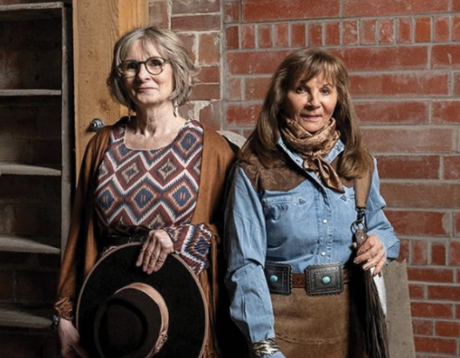 |
| Bud Cotton, Canada’s first buffalo warden at the Wainwright Buffalo Reserve in Alberta. During his time as warden he had four horses killed out from underneath him and barely escaped with his life on numerous occasions. |
Born in Sherbrooke, Quebec in 1890, Bud Cotton grew up in the Eastern Townships, but longed to ride the range. He was just 16 when he made his way to Medicine Hat, Alberta and got his first job as a cowboy.
One of his first tasks was driving the camp wagon on a hundred mile cattle drive to a railway construction site. In the evening he was the night herder. After two weeks the crew arrived with the herd and supplied fresh beef for the railroad crew that was laying track across the prairie.
His cowboying skills grew and he cowboyed for some of the biggest cattle outfits across the Canadian West, including Pat Burns.
One of his most memorable nights as a cowboy was in 1911 when a cyclone almost blew out Regina. He was working for Burns’ outfit and he had drifted a cavvy of about 100 head of horses onto the flats for grazing when the ferocious storm struck. The horses took off and he followed. By the dawn he was ten miles out and only had 46 horses left to take back to camp. By the afternoon the missing bunch were found and the storm was forgotten.
In 1912 Cotton was one of the original eleven cowboys from the Burns Ranch who brought a herd of 100 horses and a chuckwagon from Cluny to the Calgary Stampede. That same year, he helped to run 12,000 head of cattle through a mange dip on the Blackfoot reserve.
It was in 1913 when his life changed. The Canadian government had purchased the last remaining buffalo herd from Montana ranchers Pablo and Allard with the express purpose to save the threatened animals from extinction. Rounding them up was a monumental feat and eventually the herd arrived at the newly formed Wainwright Buffalo Reserve in Alberta. Bud and his saddle pal Ed were hired to get a count on the herd.
The cowboys received a quick lesson in handling buffalo; they were wild, they were fast and they weren’t afraid of anything. After a day of being chased and threatened, the cowboys found themselves horse-belly deep in a lake, held there by a threatening bull. Needless to say, their respect for the dangerous animals grew — and they didn’t get an accurate count on the herd that day.
Soon Bud was promoted to park warden, and shouldered the responsibility of managing the buffalo. In 1915 Bud went to war and fought at Vimy Ridge. By 1919 he was on his way home to the Wainwright Park Buffalo Reserve.
Of the 39,000 buffalo that were raised in Buffalo National Park, Bud stated in his memoirs, Buffalo Bud, that only two buffalo were born with white markings and one was to gain notoriety. While on patrol in May 1919, he happened upon a dead cow and a gaunt and hungry baby buffalo that sported a small dirty white patch in the center of his forehead. Cotton christened him ‘One Spot.’”
On the twelve-mile journey back to the line cabin the baby buff took to Cotton’s saddle horse, Frost, perhaps believing it could be his new mother. Once at the cabin Cotton fed the baby canned milk, water and sugar ‘with the aid of a beer bottle,” but always stayed close to Frost. One Spot made himself at home, grunting for a little sugar, and would “kick or bunt our shins if there was too much delay. Then he would lie under the table or bunk, contentedly chewing his cud.” One Spot became a tourist attraction but this glamorous career ended when he butted a new bride who was posing beside the calf. After this incident, Cotton turned the baby buff out with the rest of the herd.
 |
| The buffalo was very near extinction when the Canadian government purchased the last remaining herd from Montana ranchers, Pablo and Allard. It took top cowboys five years to round up and ship the buffalo north. |
One Spot was the boss of his herd in his early years, but he grew more ornery and reclusive as old age set in. He had no respect for men or horses and threatened any rider who attempted to come near him.
One summer Cotton took a short cut through a ravine and came face to face with One Spot. Cotton’s horse, Frost, tried to get away, but One Spot hooked the horse under his flank, throwing both Cotton and the horse over the embankment. Cotton escaped, but One Spot had killed Frost, the same horse that he had followed back to the line cabin those many years before.
During his tenure, Cotton and his cowboy crew of park riders guided newsmen and parks officials, cowboys and movie stars through the wild terrain. During his career, he had four horses killed out from under him by buffalo and narrowly escaped with his own life on numerous occasions.
In 1921 he married and he and Edith had two daughters. Bud remained the warden over the now massive herd of 48,000 buffalo. In 1940 Wainwright was closed and some of the buffalo were shipped to the newly formed Elk Island Park; the rest were shipped to Wood Buffalo National Park. Bud Cotton remained the warden until he retired in 1947.
During his years at the buffalo park, Bud launched a new career as a writer, co-authoring many books recounting his life on the plains.
In 1980, in celebration of Alberta’s 75th anniversary, a small herd of plains bison were once again established at Wainwright and Bud Cotton and many of the original Park Riders were invited for the opening of the Bud Cotton Buffalo Paddock.
Bud Cotton died in 1987 and is buried in Calgary.















